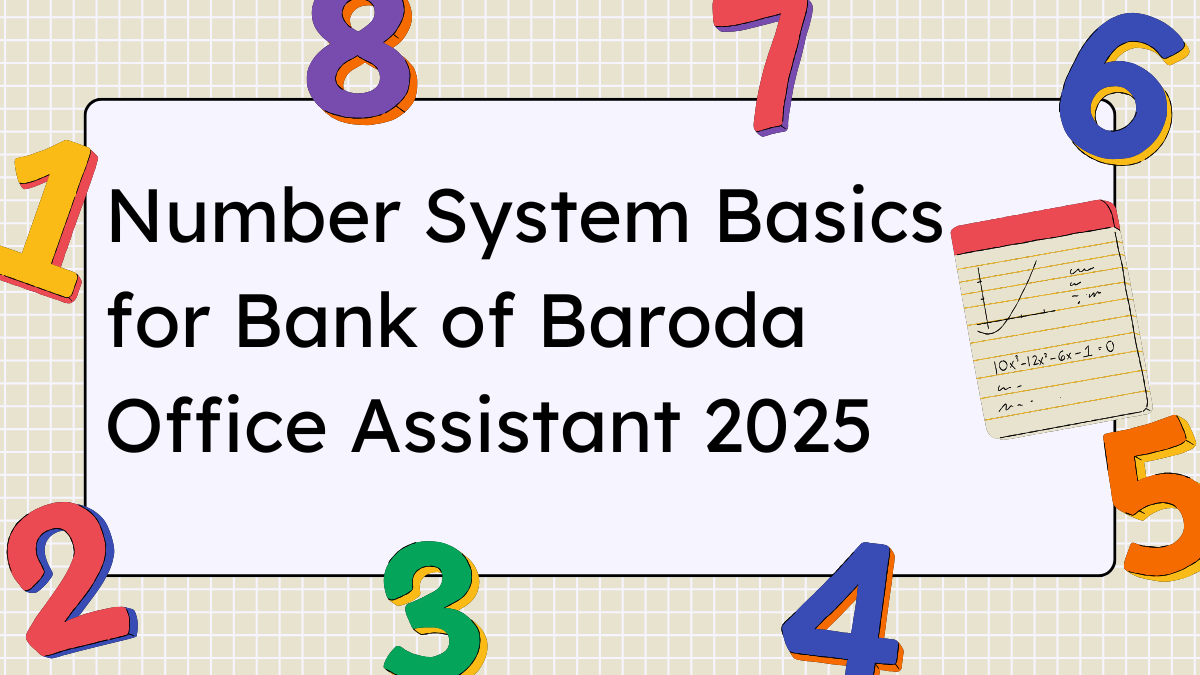The Number System is one of the most foundational topics in the Quantitative Aptitude section of the Bank of Baroda Office Assistant 2025 Exam. It forms the building block for solving various arithmetic and algebraic problems that frequently appear in bank exams. A strong grip on number system concepts not only helps in answering direct questions but also strengthens your overall calculation speed and accuracy in other topics like simplification, approximation, and data interpretation.
Number System for Bank of Baroda Office Assistant 2025
The Quantitative Aptitude section tests your numerical reasoning and ability to solve basic to moderate-level arithmetic questions efficiently. Number System is a frequent component of this section, and questions are typically easy to moderate in difficulty. Since the BOB Office Assistant Recruitment 2025 exam is aimed at minimum 10th pass candidates, the number system questions are concept-driven and formula-based, perfect for scoring with a little practice.
Key Topics Covered Under Number System
Here are the main concepts that candidates should cover while preparing for the number system:
- Types of Numbers
- Divisibility Rules
- LCM and HCF
- Prime Factorization
- Remainder Theorems
- Place Value and Face Value
- Number Series
1. Types of Numbers
Natural Numbers: Counting numbers starting from 1 (i.e., 1, 2, 3, …).
Whole Numbers: Natural numbers including 0 (i.e., 0, 1, 2, …).
Integers: All positive and negative whole numbers including zero (…, -2, -1, 0, 1, 2, …).
Rational Numbers: Numbers that can be written as a fraction (e.g., 3/4, -2, 0.5).
Irrational Numbers: Numbers that cannot be expressed as fractions, with non-repeating decimals (e.g., √2, π).
Prime Numbers: Numbers greater than 1 with only two factors—1 and itself (e.g., 2, 3, 5, 7).
Composite Numbers: Numbers with more than two factors (e.g., 4, 6, 8).
Even & Odd Numbers: Even numbers are divisible by 2 (e.g., 2, 4, 6), and odd numbers are not (e.g., 1, 3, 5).
2. Divisibility Rules
These are shortcuts to check if a number is divisible by another without actual division.
For example, a number is divisible by 2 if its last digit is even, by 3 if the sum of its digits is divisible by 3, by 5 if it ends in 0 or 5, and so on.
These rules help in quickly identifying factors during exams and simplify calculation steps.
3. LCM and HCF
LCM (Least Common Multiple) is the smallest number that is a multiple of two or more numbers.
HCF (Highest Common Factor) is the largest number that divides two or more numbers exactly.
These are often used in problems related to time intervals, grouping, and repeated events.
4. Prime Factorization
This involves expressing a number as the product of its prime factors.
It is used in finding the LCM, HCF, and simplifying fractions.
Example: 60 = 2 × 2 × 3 × 5 = 2² × 3 × 5.
5. Remainder Theorems
These rules help in finding remainders when dividing large numbers without doing long division.
Concepts like modular arithmetic and the use of remainder properties (e.g., (a + b) mod n = [(a mod n) + (b mod n)] mod n) are commonly applied.
6. Place Value and Face Value
Place Value refers to the value of a digit based on its position in a number (e.g., in 456, the place value of 5 is 50).
Face Value is the digit itself, regardless of its position (e.g., face value of 5 in 456 is 5).
7. Number Series
While considered a separate topic, identifying patterns in number series often relies on number system concepts like primes, squares, or multiples.
Tips to Prepare for Number System
Clear Your Basics: Start with the definition of different types of numbers and practice examples from each category.
Practice Divisibility Tests: These save time in elimination and factor-based questions.
Memorize Prime Numbers up to 100: This speeds up problem-solving, especially in factorization and LCM/HCF problems.
Create a Formula Sheet: Keep a handwritten note of key formulas and rules for quick revisions.
Solve Chapter-wise Quizzes: Attempt daily quizzes on number systems to build speed and accuracy.
Mock Tests & Previous Papers: Analyze past year BOB Office Assistant papers to understand question patterns.
Common Mistakes to Avoid for Number System
- Assuming all numbers are positive: Some questions may involve negatives or zeros; read carefully.
- Confusing place value with face value: Remember, face value is the digit itself; place value is the digit × its positional value.
- Ignoring remainder properties: Often, candidates guess remainders without applying the correct theorems or simplification.
| Related Posts | |
| Prepare for BOB Office Assistant Local Language Test |
|
| Bank of Baroda Office Assistant (Peon) Salary | Bank of Baroda Office Assistant Syllabus |





 IBPS RRB PO Mains Expected Cut Off 2025,...
IBPS RRB PO Mains Expected Cut Off 2025,...
 IBPS RRB PO Mains Exam Analysis 2025, Al...
IBPS RRB PO Mains Exam Analysis 2025, Al...
 GA Questions Asked in IBPS RRB PO Mains ...
GA Questions Asked in IBPS RRB PO Mains ...







